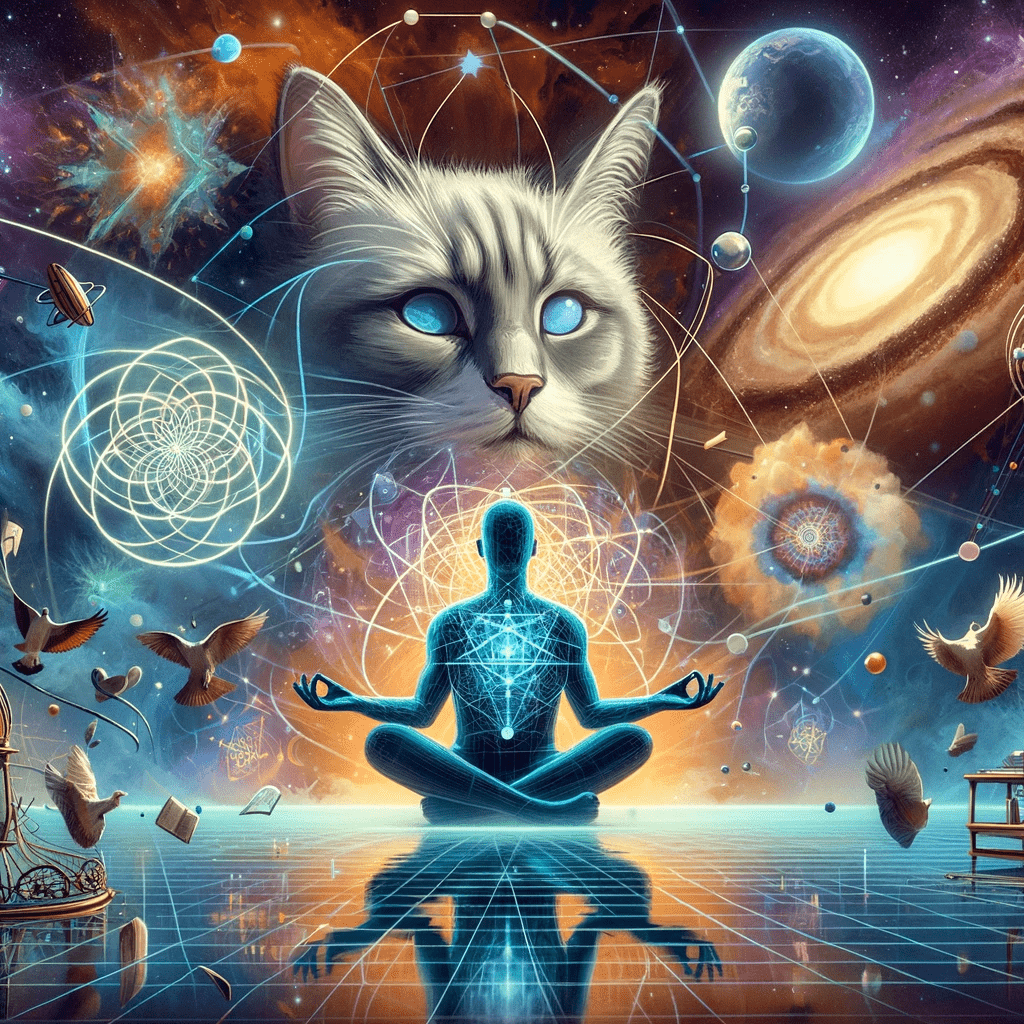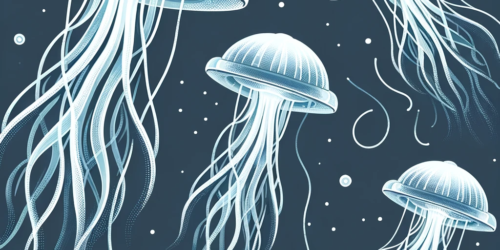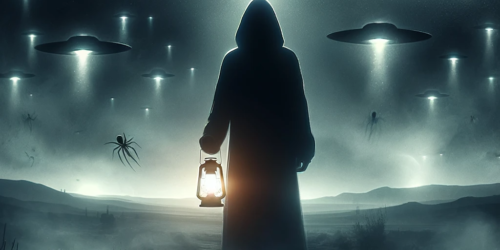Quantum Jumping

Quantum jumping is a concept rooted in both quantum physics theories and metaphysical beliefs. It’s recognized as a spiritual or personal development method. Central to quantum mechanics is the notion that particles, such as electrons, remain in an indefinite state until observed.
This concept is best exemplified by the Schrödinger’s cat thought experiment, in which a cat placed inside a box with a radioactive atom can be viewed as simultaneously alive and dead until the box is opened for observation.
The Schrödinger’s cat thought experiment is a way to illustrate the strange and counterintuitive nature of quantum mechanics. Imagine you place a cat inside a sealed box. Also in the box is a radioactive atom that has a 50% chance of decaying within an hour. If the atom decays, it releases a poison that kills the cat. If it doesn’t decay, the cat remains alive.
Now, according to classical (or everyday) logic, the cat is either dead or alive inside the box based on whether the atom has decayed. However, quantum mechanics introduces a twist: until we actually open the box and observe the cat, it’s in a state of “superposition” – meaning it’s considered to be both dead and alive at the same time. It’s only when we open the box and look that the cat “chooses” one of the states: dead or alive. This experiment was proposed by physicist Erwin Schrödinger to highlight the challenges and paradoxes of understanding quantum phenomena.
Quantum superposition, as described in the experiment, is typically observed at the microscopic level (e.g., electrons, atoms). When you get to the macroscopic level, which includes something as large as a cat, the effects of quantum mechanics aren’t so directly observable. However, scientists have been able to demonstrate quantum superposition with tiny particles in a lab. For instance, researchers have put small particles, like electrons or atoms, into a state of superposition where they exist in multiple states simultaneously until observed.
This introduces the principle of superposition, where particles might exist in several states simultaneously. Building on quantum theories, certain interpretations, notably the many-worlds perspective, suggest the existence of multiple parallel universes. In these varied universes, every conceivable event outcome takes place. For instance, an alternate version of you might have embarked on a different career path in one universe or resided in another country in another universe. Leveraging these concepts, some individuals believe it’s possible to “jump” between these parallel existences or access the experiences and knowledge of their “alternate selves.” The goal is to derive insights, acquire skills, or even transform their present reality, usually through means like meditation or visualization exercises.
It’s closely associated with metaphysical beliefs and self-help strategies. Quantum jumping is employed as a meditative method for individuals to envisage and affiliate with their alternate selves across diverse realities, aiming to draw insights or effectuate positive alterations in their existing lives.
This principle doesn’t just apply to theoretical cats in boxes but echoes the concept that everything in the universe, including us, is fundamentally quantum. This means that particles within us and around us exist in tandem with twin particles elsewhere, interconnected through the mysterious phenomenon called “spooky action at a distance” or quantum entanglement. It’s posited that our observations, intentions, wishes, or prayers can influence this quantum fabric, suggesting that our consciousness and collective beliefs might ripple across the universe, impacting realities beyond our immediate perception.
The Mandela Effect, a phenomenon where a large group of people remembers something in a way that contrasts with the current reality, has intrigued many over the years. Some suggest that this collective misremembering could be a result of quantum jumping or shifts between parallel universes. Drawing a connection to the principles mentioned, the many-worlds interpretation of quantum mechanics posits the existence of countless parallel universes, each representing different possible outcomes. In the context of the Mandela Effect, it could be theorized that groups of people may have experienced or “remembered” events from another parallel universe. These memories, which differ from the established facts in our current reality, might be residues or echoes from these alternate universes. Thus, just as quantum jumping suggests the possibility of accessing experiences and knowledge of “alternate selves” in different realities, the Mandela Effect could be seen as unintentional glimpses or “bleed-throughs” from other universes where events transpired differently. The merging of quantum mechanics and metaphysical beliefs in explaining such phenomena showcases the intriguing crossroads of science, belief, and human experience.
If the collective consciousness of a significant group of people recalls events differently, could this be a result of our intertwined quantum nature causing shifts or “jumps” in our perceived reality?
By employing techniques like meditation, some believe we can tap into these alternate realities, accessing knowledge, experiences, or even influencing our present.
The interconnectedness of the universe, as suggested by quantum mechanics, might provide a framework through which we can understand phenomena like the Mandela Effect and concepts like Quantum Jumping. Both highlight the fascinating intersection of science, belief, and the profound influence of human consciousness on our understanding of reality.



